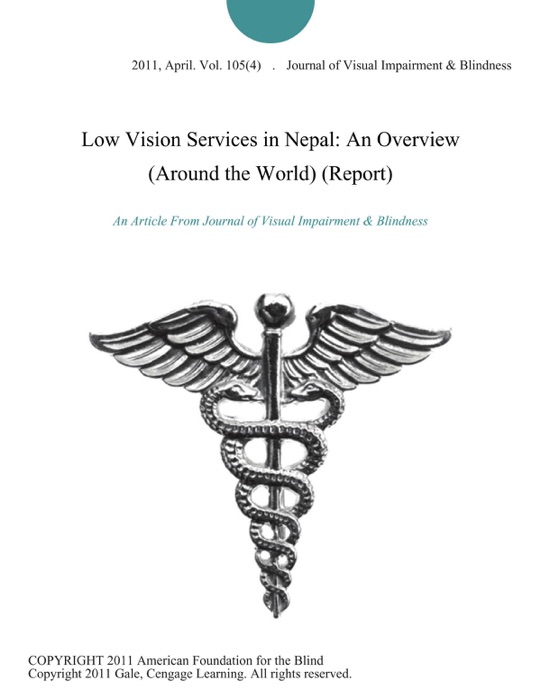Download ~ Low Vision Services in Nepal: An Overview (Around the World) (Report) by Journal of Visual Impairment&Blindness ~ eBook PDF Kindle ePub Free

eBook details
- Title: Low Vision Services in Nepal: An Overview (Around the World) (Report)
- Author : Journal of Visual Impairment&Blindness
- Release Date : January 01, 2011
- Genre: Health & Fitness,Books,Health, Mind & Body,
- Pages : * pages
- Size : 193 KB
Description
A person with low vision is someone who has an impairment of visual functioning despite treatment or standard refractive correction. By definition (World Health Organization, 1993), this impairment includes a visual acuity of less than 6/18 (20/60) to light perception or a visual field of less than 10 degrees from the point of fixation in people who are using or are potentially able to use vision for planning or implementing tasks. Globally, of about 314 million people who are visually impaired, 45 million are blind; however, refractive error as a cause of visual impairment is not included in that number, which implies that the actual global magnitude of visual impairment is greater (Siddiqui, Backman,&Awan, 1997). Worldwide, for each person who is blind, an average of 3.4 people have low vision, with country and regional variations ranging from 2.4 to 5.5 (Brilliant et al., 1985). Although low vision does not fall into the category of blindness per se, it has enormous social and economic consequences in terms of productivity losses and dependence. Nearly 87% of the world's people who are blind live in the developing world. More than half live in Asia, and the vast majority of them live in rural communities (Siddiqui et al., 1997). The statistics for Nepal are similar to those of the rest of the developing world: The prevalence of blindness is 0.84 per 100 inhabitants, 92% of the people who are blind live in rural areas, and 80% of the blindness is avoidable (curable or preventable) (Brilliant et al., 1985). In Nepal, the prevalence of low vision is 1% (Nepal Netra Jyoti Sangha, NNJS, 2009). Many reasons have been identified for the rising tide of blindness and low vision. Prominent among them is the increase in the world's elderly population, particularly in developing countries. It is estimated that by 2025, there will be about 1.2 billion older people, almost three-quarters of whom will be living in developing countries (Shamanna, Dandona,&Rao, 1998).